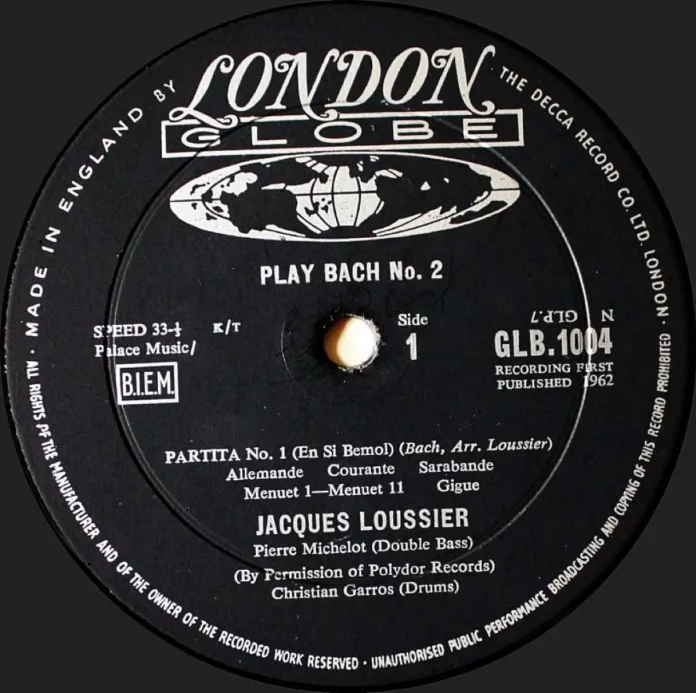Jazzing the classics is a doubly hazardous business since it is viewed with as much suspicion by the jazzman as by the straightman. Unless the musician possesses the sense of balance of a tight-rope walker he will plunge to certain death – pleasing no-one and offending many. The widespread acclaim which greeted the first attempt by these three Frenchmen to play Bach in a 20th century, jazz-inflected, manner (Play Bach No. 1 – GLB 1002) was therefore an enormous tribute to their musical taste and sensitivity, and in this, their second essay in the field, they are no less successful.
In these days when the electronic organ is becoming so fashionable in jazz the temptation to play these Preludes on that instrument must have been considerable. Very wisely, however – since their performance on the schmaltzy jazz organ could hardly have been an improvement on the authentic one on pipe-organ – it was decided to transcribe the pieces for recording by a piano / bass / drums trio, and the arrangements by pianist Loussier are for the most part extremely effective (although they lean rather heavily on the M.J.Q. at times – for instance in the setting of single-note piano melodic line against heavily accented and synchronised cymbal and tonic-bass off-beats). Indeed it is the inclusion of bass and drums which largely give these interpretations their jazz flavour. Each instrument is employed with exemplary discretion – Christian Garros displaying the restraint and precision of a Connie Kay, and Pierre Michelot proving, through his richly toned bass playing, that he is a musician who possesses a sense of the appropriate as well as exceptional technical mastery over his instrument.
Jacques Loussier is apparently a classically trained pianist who yet knows his John Lewis and his George Shearing as well as his J. S. Bach. His problem seems to be not so much to pay homage to Bach as to jazz, and the most musically satisfying passages are those in which the scores are being read fairly literally against Michelot’s walking bass and Garrot’s light cymbal. His sudden ‘breakaways’ into Shearingesque chording are paradoxically anti-climatic, and his uptempo improvisations on the last tracks on each side even more so. To my surprise, I find the normally over-familiar Choral(e) and Aria on Side 2 to be the most pleasing tracks.
The strength of Loussier’s interpretations lies more in their melodic and harmonic, than in their rhythmic, content; and for madly swinging Bach one can still do no better than go straight to Wanda Landowska’s recording of the “Italian Concerto”. To be frank, I cannot see a great future for this type of musical activity: I feel that jazzmen are using their time more profitably in playing Bach-influenced jazz (like John Lewis has been doing for years, for example) than in dressing up the old masters in ‘hip’ gear. Still, I doubt whether anyone could have made a better job of this experiment than the Jacques Loussier trio, and if the cul-de-sac up which they are proceeding is residentially undesirable at least it provides a delightful stroll.
Discography
Partita No. 1 (Allemande; Courante; Sarabande; Minuets I & II; Gigue) (18½ min) – Choral; Prelude 6; Aria; Prelude 16; Fugue 16; Prelude 21 (18 min)
Jacques Loussier (p); Christian Garros (d); Pierre Michelot (b).
(London GLB 1004 12inLP 32s. 2d.)
















